Isaac Curtis, who played wide receiver with such frosty grace that his teammates called him "Ice," is one of the coolest guys on one of the hottest Bengals teams that won the coldest NFL game of the last 40 years.
So on the 40th anniversary of the 59-below wind chill that impaled Riverfront Stadium in the "Freezer Bowl," Curtis knows cool and he's looking at Bengals quarterback Joe Burrow.
"He's a cool guy," Curtis says. "He's a cool guy."
It was 40 years ago Monday that they froze the Chargers out of the nine-below AFC championship game. It was 27-7 and the 1981 Bengals are warming themselves with memories of that first Super Bowl trip by enjoying the exploits of their striped descendants as they begin their own playoff run this week.
"Very similar," Curtis says of the two teams. "I think they've got an outstanding offense. The same with us in in '81. We felt like we could play with anyone. This offense can play with anybody in the AFC and NFC. They've got the firepower as long as we can protect Joe.
"You've got a defense that's good and playing well. Look at what they did to Kansas City in second half last week. That wasn't easy to do. We've got a great young team. That's the impressive thing. Look at how young they all are."
Linebacker Reggie Williams, the poet laureate of both Bengals' Super Bowl teams, hasn't missed a snap this season.
"It's cool," says Williams, who, like Curtis, was on the ballot for this season's Bengals' inaugural Ring of Honor class. "Forty years and the Bengals are back. I think when they began the Ring of Honor that sent a message to the current players. They're recognizing the franchise's best days and they're going to recognize the best days in the future."
Jan. 10, 1982 was so cool that cornerback Louis Breeden, the man that hauled the Freezer Bowl from San Diego to Cincinnati, wriggled into panty hose before the game. New Englander Dave Lapham, simply looking for an edge at left guard against Chargers' monstrous defensive tackle Big Hands Johnson, went bare-armed into Lexington and Concord-like lore with his offensive line. Eddie Edwards, their all-time leading sacker, actually did catch fire.
"It was the first time the NFL tried electric benches," Williams says. "Eddie was from Miami. And he was scrunching so far down into that bench. I looked over and he was on fire. I said Eddie, 'Your pants are on fire.' He said, 'I don't care.'"
Jan. 10, 1982 was so cool you can mark down Ken Anderson as the only man to quarterback wins on two different planets. Earth and Hoth of Star Wars fame.
Anderson, the NFL MVP of that season he quarterbacked the Bengals to a 5-0 November that turned the season around, was one of those inducted into the Ring that September night Burrow and tight end C.J. Uzomah solved Jacksonville's zero blitz for the winning play late in the game that turned into a last-snap field goal.
"They're a smart team," Anderson says. "I saw where that's the first time Uzomah ran that play from that spot in a game where the wide receivers usually line up. They executed the play. I guess on Fridays they line up in different formations and switch people around to go over different route combinations. However many times you do that, when you go out and execute that in a game, that shows that you're are a pretty intelligent player."
The similarities aren't lost on Anderson. The biggest differences in the two teams are the offensive lines. The Super Bowl Bengals had one of the best groups in the league, anchored by Hall-of-Famer Anthony Munoz and perennial Pro Bowler Max Montoya. The current Bengals are developing in the first year of offensive line coach Frank Pollack's system.
But like Burrow has Ja'Marr Chase, Anderson had an unstoppable 1,000-yard rookie wide receiver wise beyond his years blazing trails in the team record book in lanky Cris Collinsworth. Burrow doesn't have record-breaking tight end like Anderson had in Dan Ross but, he's got a bruising, tall and gifted 1,000-yard receiver in Tee Higgins. In Joe Mixon, he's got a big 1,000-yard running back like Anderson had in Pete Johnson.
Just for fun, these Bengals also have a slot receiver in Tyler Boyd, who had two 1,000-yard seasons before Chase and Higgins got in the league. Curtis, in his ninth season that year, had already had a supersonic rookie year himself in 1973, made them change the rules and had been to four Pro Bowls by the time Ross and Collinsworth arrived.
And on defense, they might have had more prolific sackers with Williams' 11, Edwards' 10 and nine from the late Ross Browner, who passed last week. But Williams sees the same kind of communication now that led to his tackle for a loss then on the first series of the second half.
"I was thinking about Ross. The Chargers had just come out of that warm locker room," Williams says. "We did an X stunt where he and I switched areas of responsibility. He takes contain and I take attack. I was able to go behind him and hit (running back) Chuck Muncie right in the chest to force a fumble. Ross recovered. Our defense had great ability to communicate and pass off each other's strengths. The defensive ends they have now, they're awesome."
Breeden is thinking about the record-breaking 14 sacks of Trey Hendrickson.
Images from the 1981 AFC Championship between the Cincinnati Bengals and San Diego Chargers, a game affectionately known as the "Freezer Bowl." The Freezer Bowl is recalled as the coldest game in NFL history.
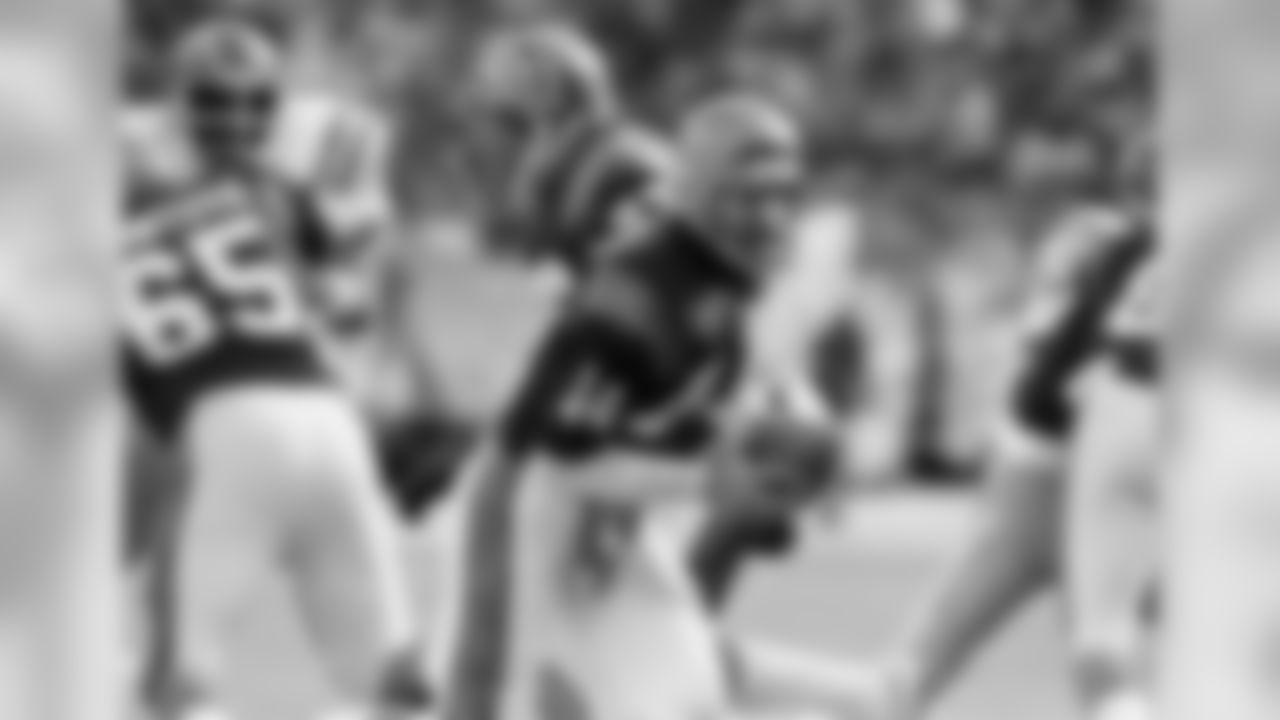
Cincinnati Begals quarterback Ken Anderson turns to make a handoff during the AFC championship game against the San Diego Chargers in Cincinnati on Jan. 10, 1982. Subzero temperatures curtailed the aerial duel expected by the two teams. (AP Photo)
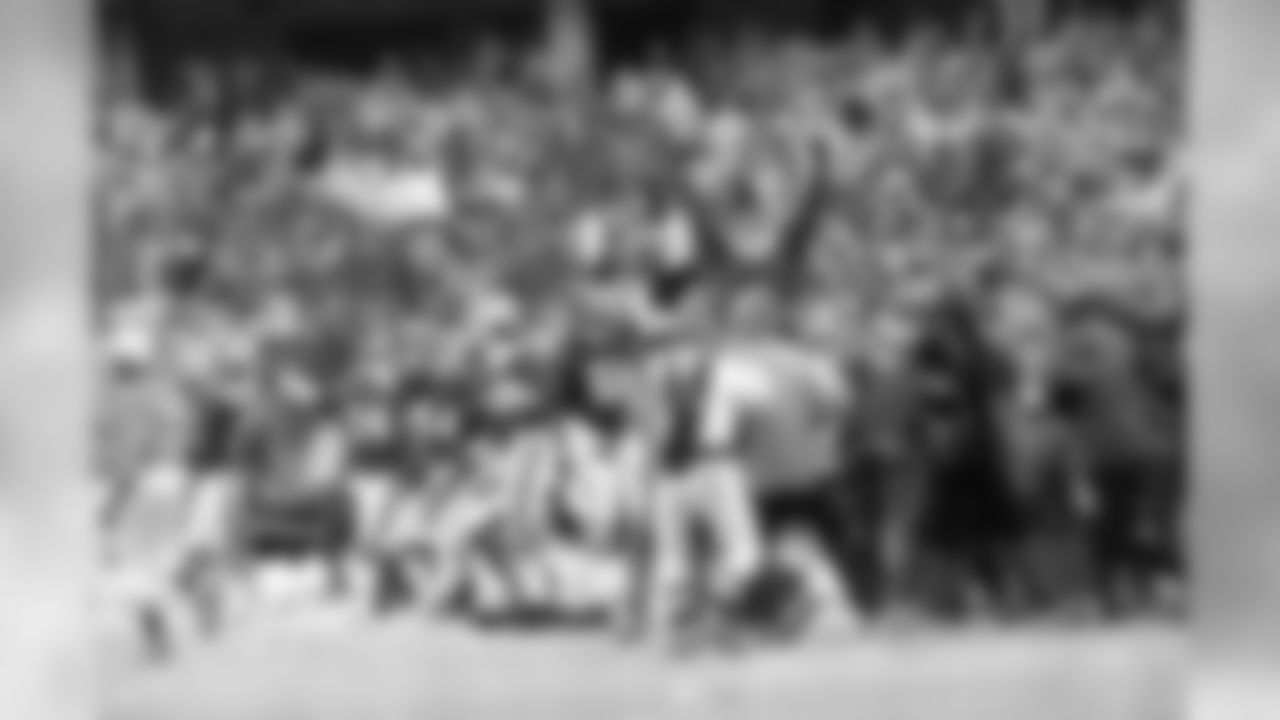
The Cincinnati Bengals break out in celebration after defeating the San Diego Chargers 27-7 in the AFC championship game in Cincinnati, Jan. 10, 1982. (AP Photo)

Their breath made visible by sub-zero temperatures, fans cheer during the AFC championship game between the Cincinnati Bengals and the San Diego Chargers in Cincinnati, Jan. 11, 1982. The Bengals defeated the Chargers, 27-7. (AP Photo)
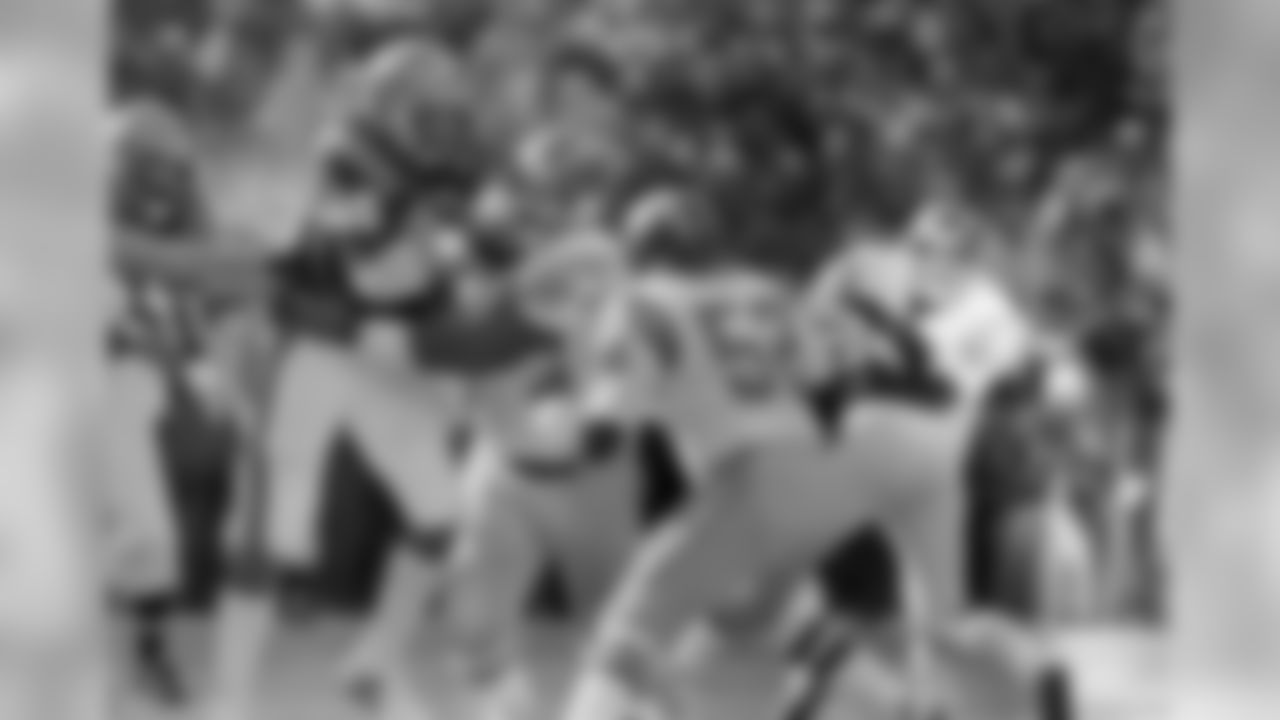
San Diego Chargers defensive players Louie Kelcher, center, and Ray Presten, right, stop Cincinnati Bengals running back Charles Alexander, left, for a short gain during first quarter action of the AFC championship game in Cincinnati on Jan. 10, 1982. (AP Photo)
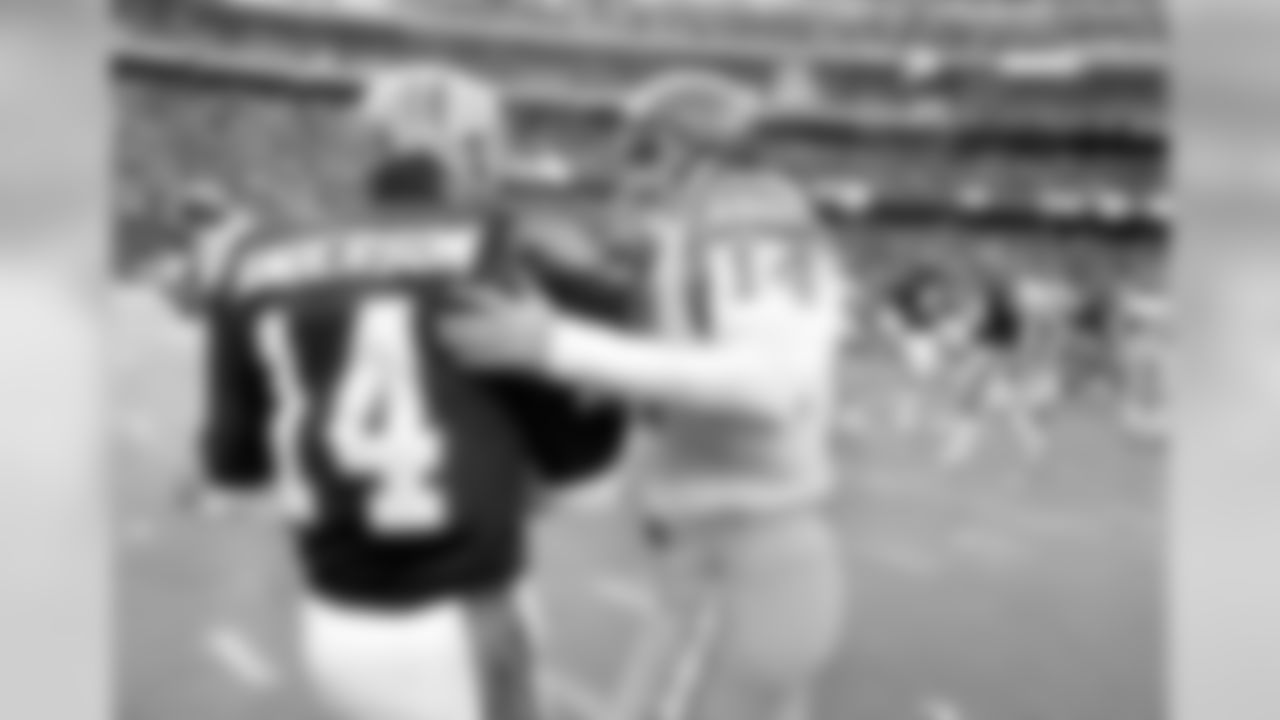
Cincinnati Bengals quarterback Ken Anderson, left, reacts as San Diego Chargers quarterback Dan Fouts, right, looks dejected after the Bengals defeated the Chargers in the AFC championship in Cincinnati on Jan. 10, 1982. Fouts was intercepted twice in the game, and Anderson passed for two touchdowns and no interceptions. (AP Photo)
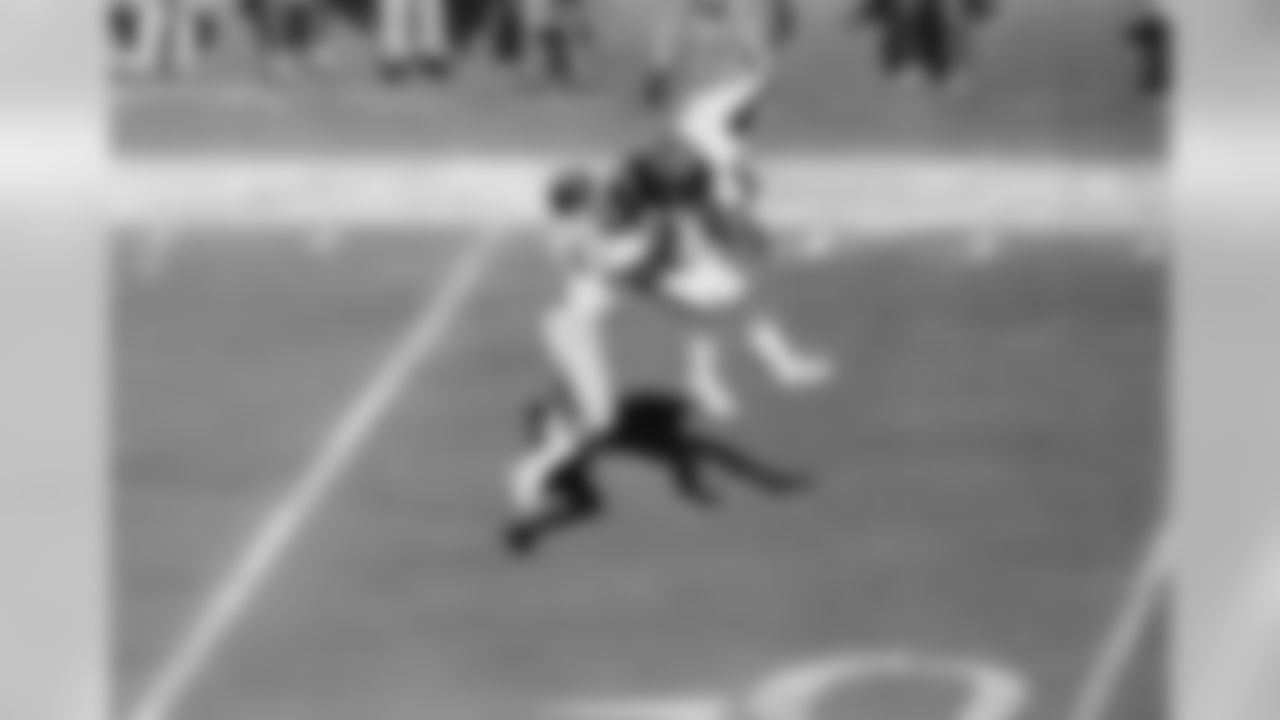
Cincinnati Bengals cornerback Louis Breedon, right, intercepts a pass to San Diego Chargers receiver Charlie Joinor, left, to break up a second quarter drive by the Chargers in Cincinnati on Jan. 10, 1982. Breedon's interception came on the Bengals six yard line. (AP Photo)
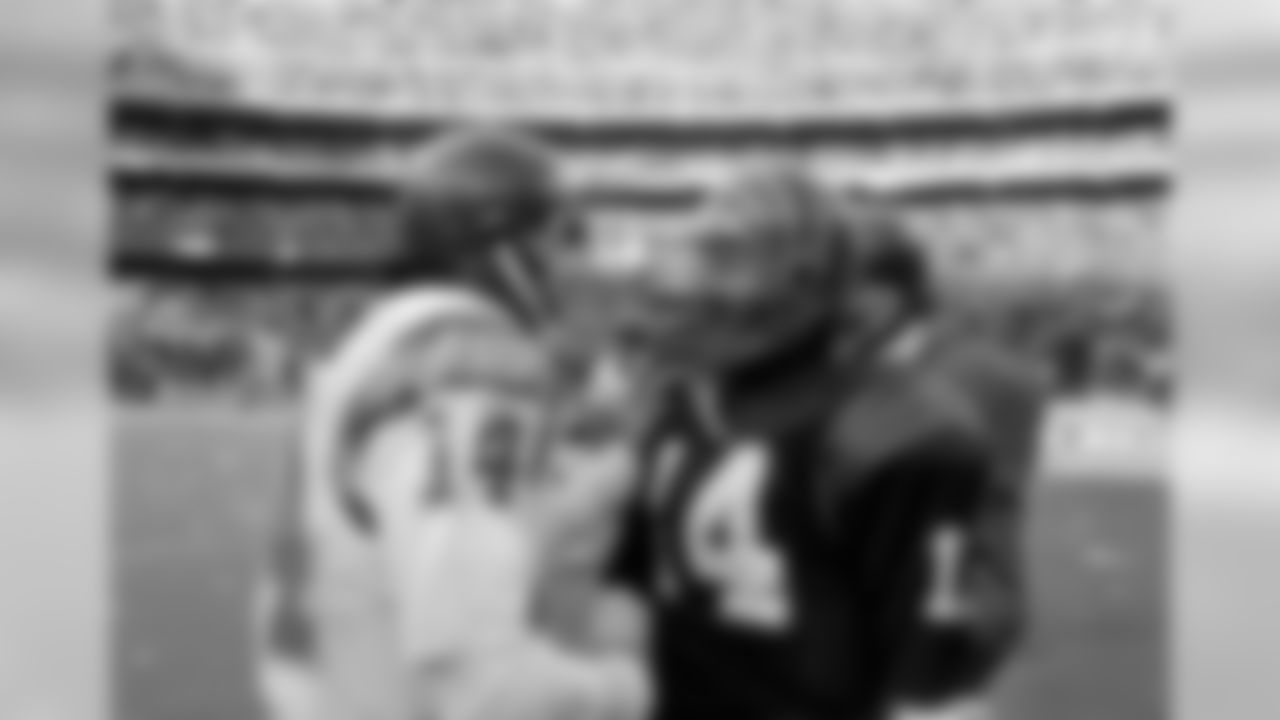
Cincinnati Bengals quarterback Ken Anderson, left, reacts as San Diego Chargers quarterback Dan Fouts, right, looks dejected after the Bengals defeated the Chargers in the AFC championship in Cincinnati on Jan. 10, 1982. Fouts was intercepted twice in the game, and Anderson passed for two touchdowns and no interceptions. (AP Photo)
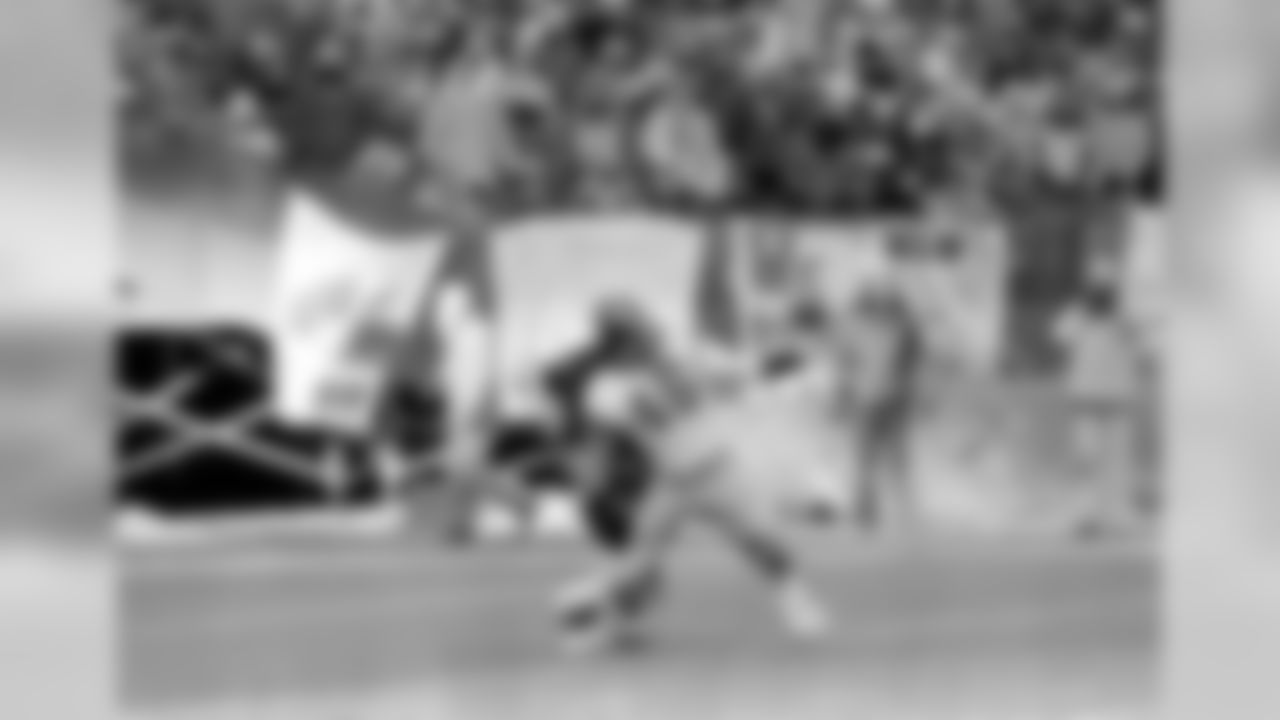
San Diego Chargers running back Chuck Muncie (46) reaches for a pass from quarterback Dan Fouts during the AFC championship game against the Cincinnati Bengals in Cincinnati on Jan. 11, 1982. Bengals defensive player Mike Fuller helps break up the play. The Bengals won 27-7. (AP Photo)
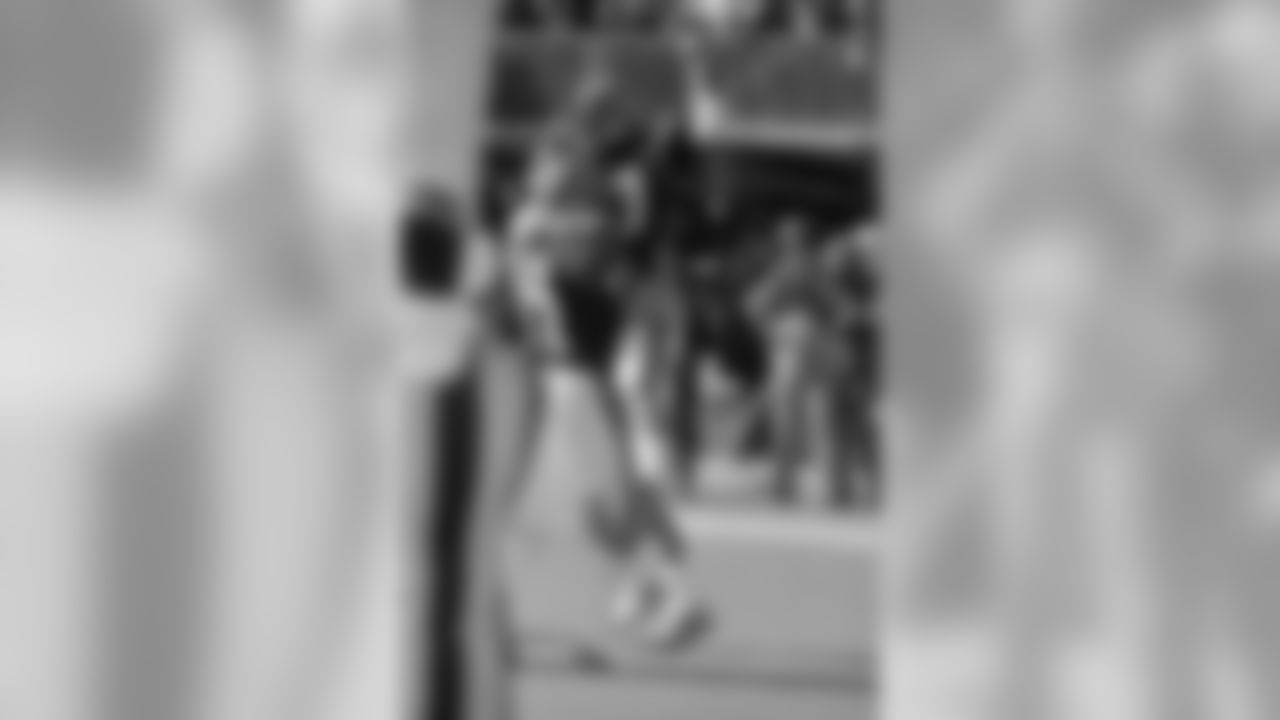
Cincinnati Bengals tight end M.L. Harris is carried by teammate Mike Wilson after scoring a touchdown on a pass from quarterback Ken Anderson in the first quarter of Sunday, Jan. 10, 1982 AFC title game with the San Diego Chargers in Cincinnati. (AP Photo)
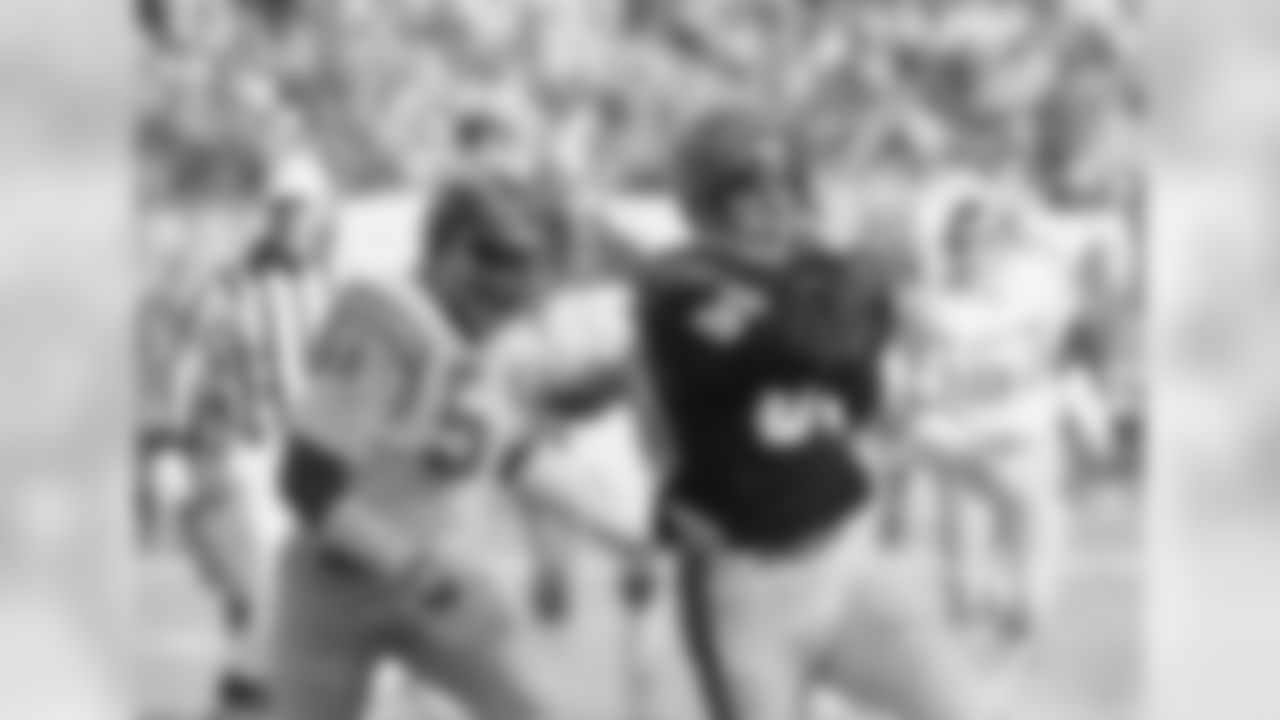
Cincinnati Bengals tight end Dan Ross drives for yardage after a pass reception from Bengals quarterback Ken Andersen during the AFC Championship game against the San Diego chargers, Sunday, Jan. 10, 1982, Cincinnati, Oh. Chargers linebacker Woodrow Lowe makes the stop during first half action. (AP Photo)
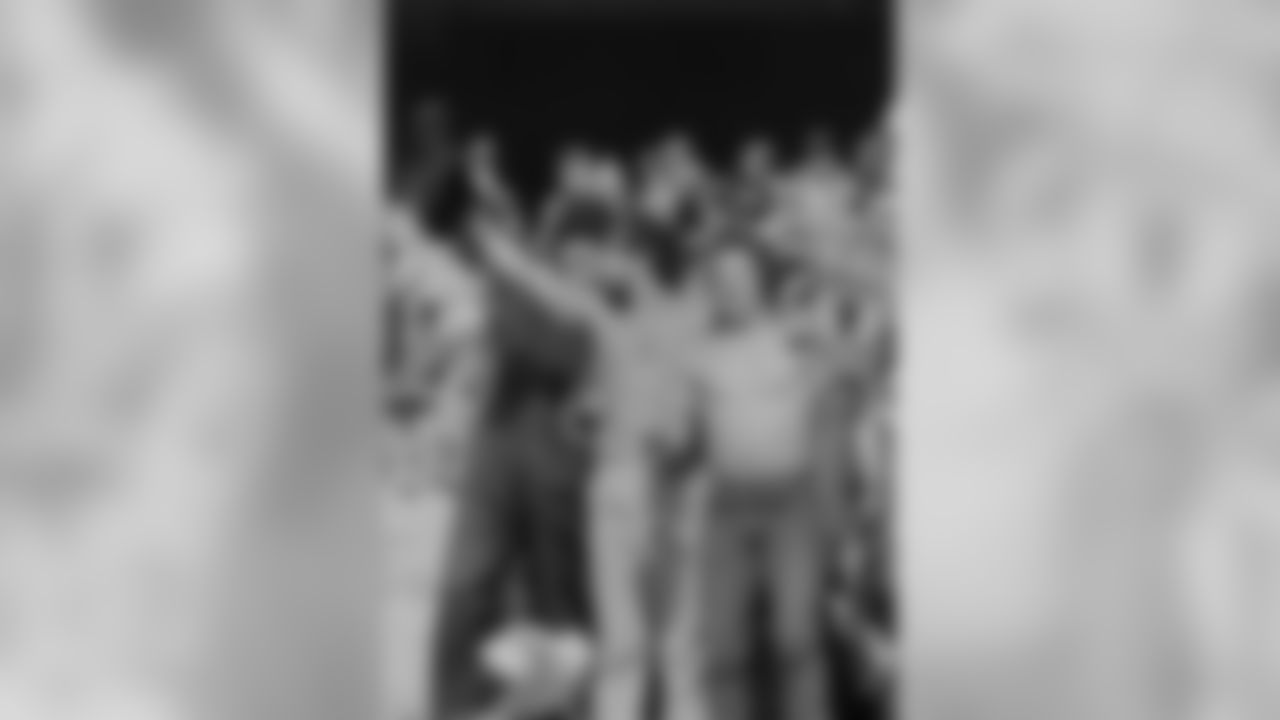
Shirtless Cincinnati Bengals fans are joined by another in a snowmobile suit as they cheer on the Bengals in the AFC championship game against the San Diego Chargers in Cincinnati, Jan. 10, 1982. Temperature at the game was minus 9 degrees. (AP Photo)
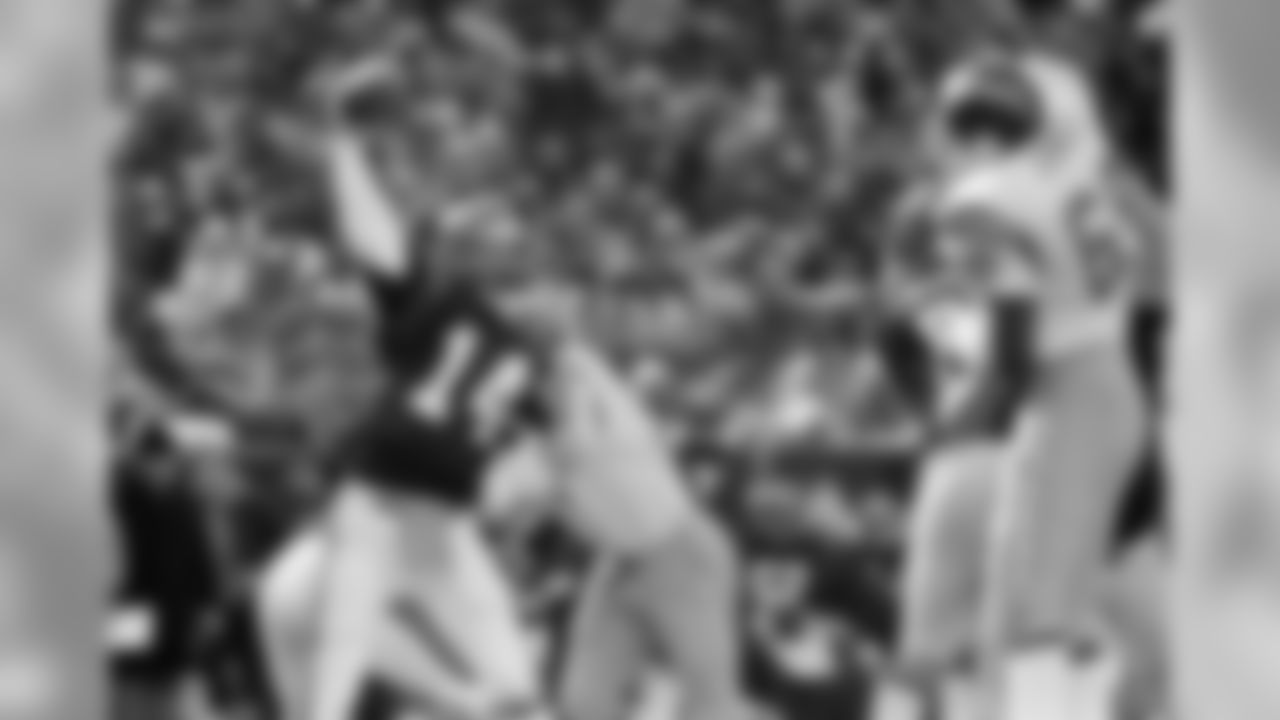
Cincinnati Bengals quarterback Ken Anderson, left, prepares to throw during the AFC championship game against the San Diego Chargers in Cincinnati on Jan. 10, 1982. (AP Photo)
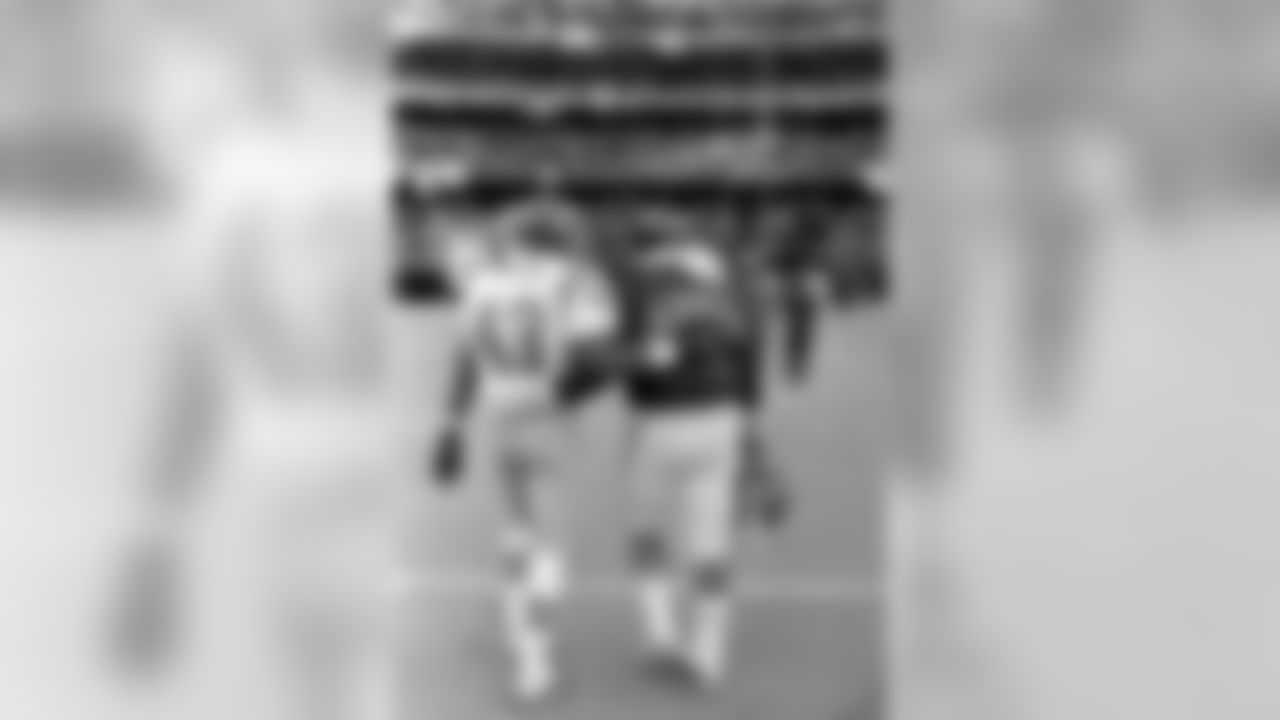
San Diego Chargers defensive back Bob Gregor, left, walks off the field with a Cincinnati Bengal in Cincinnati on Jan. 10, 1982. The Bengals defeated the Chargers 27-7 in the AFC championship game. (AP Photo/Harold P. Matosian)
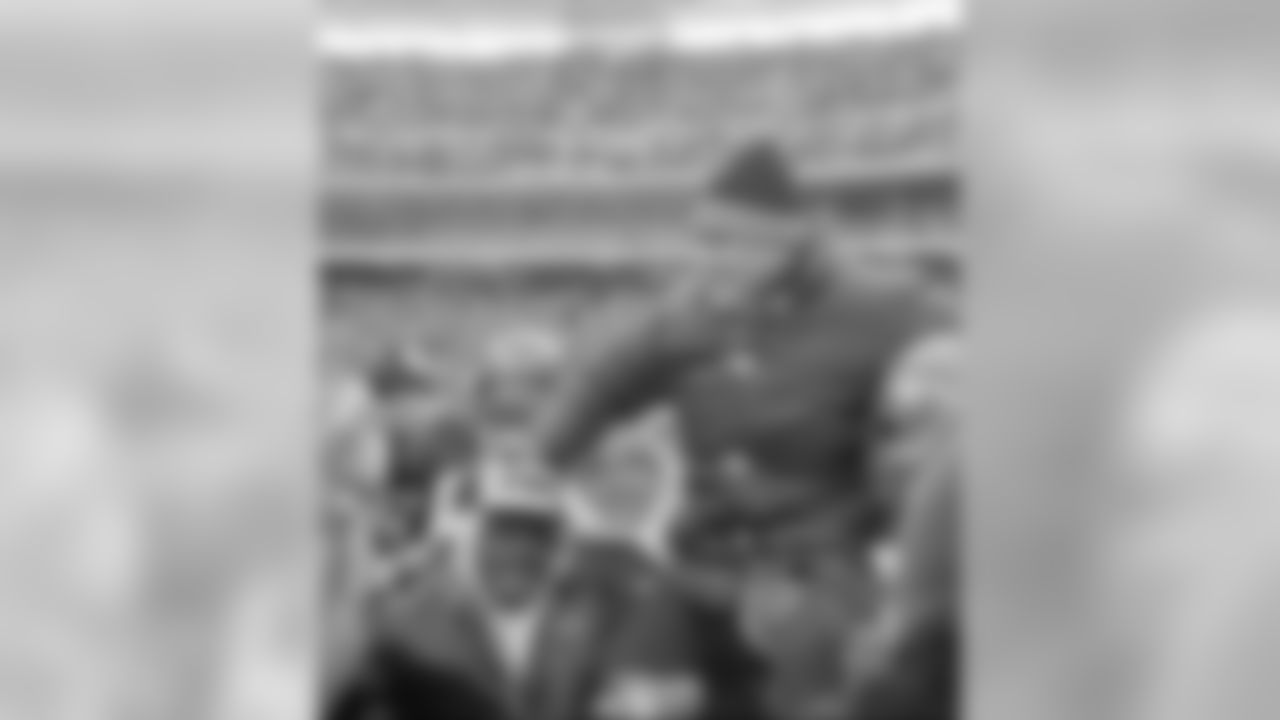
Cincinnati Bengals coach Forrest Gregg is carried off the field by jubilant players and fans after the Bengals defeated the San Diego Chargers in the AFC Championship playoff game in Cincinnati, Ohio, Jan. 10, 1982. The win gives the Bengals their first Super Bowl position. (AP Photo)
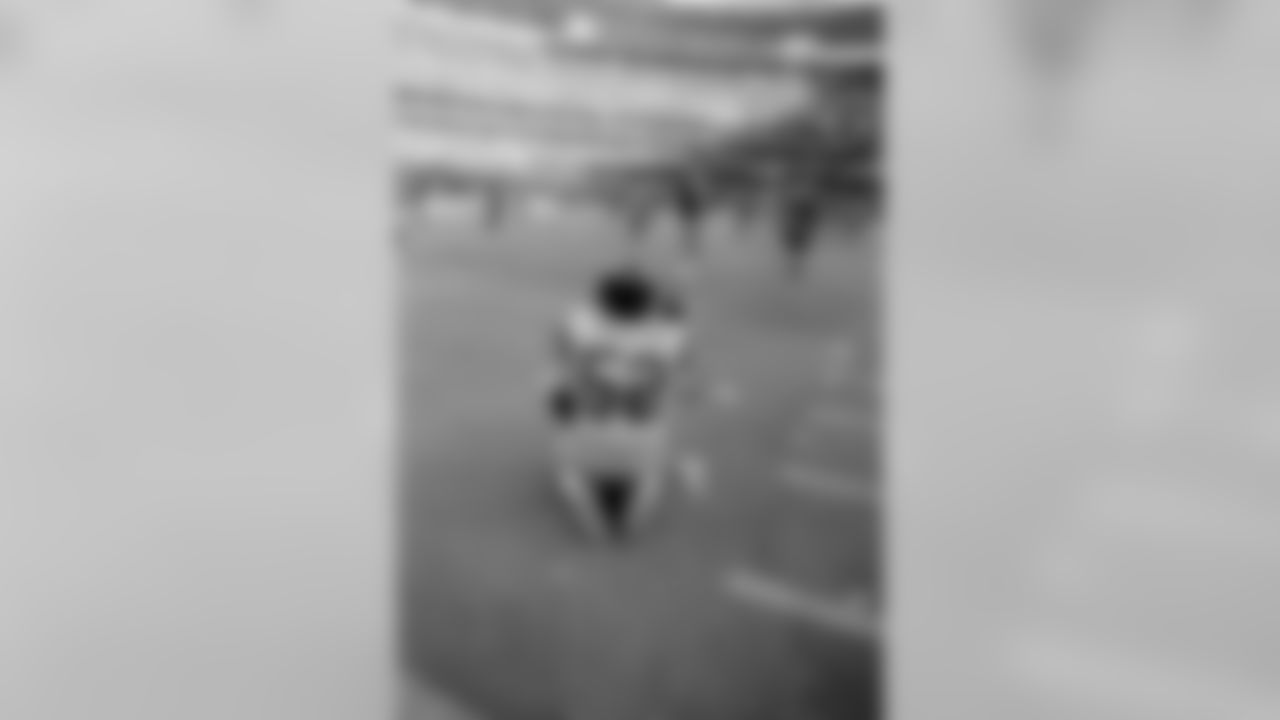
San Diego Chargers linebacker Ray Preston kneels on the turf after the Cincinnati Bengals defeated the Chargers 27-7 in the AFC championship game in Cincinnati on Jan. 10, 1982. (AP Photo)
"That guy Hendrickson," Breeden says, "he's a beast. I'm telling you, they're a good team."
On offense, it's almost like you're looking in a mirror.
"We were a high-scoring team. We got everyone the ball. We could throw it long, we could throw it short," says Anderson, who watched every snap of last week's win over the Chiefs. "Because of COVID, I haven't been around these guys for two years, but I get the sense they're really together as a team. That everyone believes in everybody else."
The' 81 Bengals certainly believe in Burrow. Breeden and Curtis, lifelong friends, hooked up this season to go watch them, play, of all teams, the Raiders. As they watched from seats high up in Allegiant Stadium during another November to Remember, they kept shooting each other looks.
"This boy is good," Breeden says. "This boy is good."
Two months later, Breeden is still shaking his head.
"He's got things you can't teach," Breeden says. "They've got to protect him. The way he climbs the pocket and gets rid of it so quickly and accurately …"
Breeden also wonders what he was thinking 40 years ago. He was thinking about it the other day when he was walking his dog in temperatures that had the gall to go below 20 degrees.
"I love him, but I wish he could walk himself. I mean, it was cold," Breeden says. "Looking back on it, it was a great thing to be a part of, but I wouldn't want do it again. I think about that day and it just wasn't right. The only thing right about that day was that we won the ball game.
"Dave Lapham and the line, man, those guys. If you had told me you have to go out there with no sleeves or not play, I would have left right there and watched it on TV."
Lapham, who became the Bengals legendary radio analyst after he went into Freezer Bowl lore, isn't sure how the linemen ended up with no sleeves. If he passed the word or if somebody saw him and got inspired. All he knows is that playing against Melrose on Thanksgiving Day for Wakefield in suburban Boston before becoming Ben Schwartzwalder's last captain at Syracuse, Lapham was intimately familiar with cold weather.
Honestly, he was thinking more about Bengals offensive line coach Jim McNally, a guru in the making.
"I went out there early to see if I could stand it," Lapham says. "Our big thing was we didn't want to have any extra material the defensive line could use to grab you. Jimmy always wanted us to have our jerseys tight to our bodies. Almost like they were tailored. I figured if you slather on the Vaseline, it would be tough on them."
The ultimate compliment came 20 years later from the Bengals head coach that day. The late Forrest Gregg, the Hall of Fame tackle who 14 years before played in the coldest game ever when his Packers offensive line nudged the Cowboys for the last yard at icy, 13-below Lambeau Field to win another Super Bowl berth, found himself coaching in what is still the second coldest game of all time.
When he remembered in 2002 how Lapham and the line went sleeveless, "I was thinking, 'You're better men than me,'" Gregg said.
If Breeden is still amazed at Lapham's line, he's down right shocked at what Anderson was able to do. Which was somehow throw two touchdowns and no interceptions.
"How did Kenny do it?" Breeden asks. "I mean, the difference between him and Dan Fouts that day was so big. I just don't know how he was able to throw it like that."
Breeden had the best view of that. Two months before, when the Bengals hammered the Chargers, 41-17, on the road to win the right to host "The Freezer Bowl," he sealed it late in the first half when he stepped in front of the future Hall-of-Famer Fouts' pass to old Bengal Charlie Joiner in the end zone and took it 102 yards.
With Fouts' passes slamming into in the historic wind, Breeden got him again.
This is how Anderson says he did it:
"I had pretty large hands and I was lucky. I had a pretty tight spiral. We found out pretty early when I tried to throw wide to Pete Johnson out in the flat and it just fluttered. We just made the adjustment and (offensive coordinator) Lindy (Infante) did a great job. Most of our completions were inside the hash marks. I had more control of the ball in there. The spiral wasn't affected as much. We were working the inside routes. We only had one turnover. Danny Ross fumbled late in the game and that was it. He also made a diving catch and I don't know how he did that. I mean, he was wearing scuba gloves."
Twenty years later, Gregg could still remember tight end M.L. Harris catching the game's first touchdown, an eight-yarder, with the gloves he wore to the stadium. There was virtually no cold weather equipment.
Anderson had a guy wear mittens on the sidelines and he'd put them on when he came off the field. He had no pockets on his No. 14 jersey. No gloves. When he was in the huddle, he had to grab the top of his long underwear to keep his hands warm.
"Just looking at the crowd and the people and I have some appreciation for it all and that people are doggone crazy, too," says Breeden, the team philosopher if Williams is the poet laureate. "You can see the frost. You can hardly see the people because of all those clouds from everyone breathing. And then everyone once in a while you'd see somebody not wearing a shirt."
Anderson can remember the homemade banners fluttering in the freeze. The birth of the painted faces of Bengaldom.
"And the great thing is," Anderson says, "you can see it. The fans are back."
So is a high-percentage quarterback.
"He's accurate. He has control of the game. No matter what's happening, you don't see him frustrated," Anderson says. "He's always in control of the situation. It's the old Paul Brownism. It's not too big for him. When the lights come on, he starts to shine. In the most crucial moments, he has the ability to make plays. Not a lot of guys can do that."
For a minute there, it sounded like Anderson was talking about himself. But Curtis saw last week's clip from the locker room. How Burrow celebrated the AFC North title with a cigar and a dance.
"You're never going to see Kenny dancing with a cigar. You're never going to see that," Curtis says. "But he's one of the guys. The team feels it. The team knows it. Kenny was like that. We rallied around Kenny. If you do your job, he's going to get you the ball. We have to protect him. Be where you're supposed to be and we've got a guy back there that's going to deliver the mail."
In rain, snow, sleet. Or the Freezer Bowl.
"You can't win without a quarterback and he's the real deal," Anderson says. "We're lucky."
"A cool guy," says the man they call "Ice."







